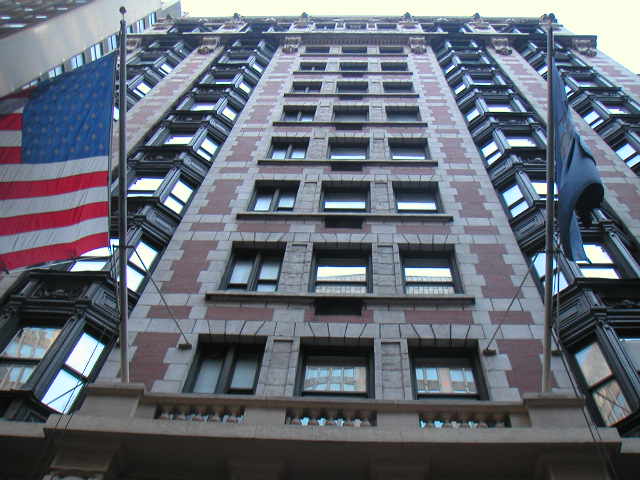 |
New York
Architecture Images- Midtown Algonquin Hotel |
|
architect |
Goldwin Starrett |
|
location |
59-61 W44, bet. Fifth
and Sixth Aves. |
|
date |
1902 |
|
style |
Beaux-Arts |
|
type |
Hotel |
 |
|
|
Legendary Algonquin manager (1907) and owner (1927) Frank Case enjoyed the company of actors and writers, and he was instrumental in positioning the hotel at the center of New York’s literary and theatrical life. Mr. Case attracted personalities like Booth Tarkington, Douglas Fairbanks, Sr., John Barrymore and H.L. Mencken, who called the Algonquin “the most comfortable hotel in America.” The hotel also welcomed female guests from the beginning, among them Gertrude Stein, Marian Anderson, Simone de Beauvoir, Eudora Welty and Helen Hayes. William Faulkner drafted his Nobel Prize acceptance speech at the Algonquin in 1950. The Algonquin Round Table set the standard for literary style and wit in its era. For one glorious decade beginning in 1919, the Round Table was the scene of scintillating daily lunch meetings by a group of literary legends, which included Dorothy Parker, George S. Kaufman and Robert Benchley. Upon Mr. Case’s death in 1946, Ben Bodne acquired the hotel and proceeded with a careful and loving refurbishment, paying great attention to the preservation of the Edwardian lustre that guests cherished. Bodne did not compromise on comfort or convenience, and the Algonquin was the first New York hotel to introduce electronic key cards, smoke detectors and air conditioning in all rooms. A new multi-million dollar historical restoration, including hand-selected antique furniture and soothing soaking tubs, was completed in 1998. The Algonquin was named one of “America’s Ten Great Historic Hotels” by Historic Traveler magazine. |
|